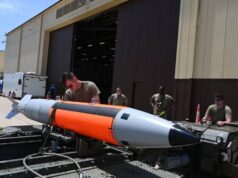Heihe – Tengchong Line

By
Colonel Krityanand Das, Veteran
Heihe-Tengchong Line is an imaginary line joining two places in China diagonally. Heihe in the north east in Heilongjing province in Manchuria and Tengchong in Yunan province in the south China. Both these provinces are part of Monchu conquests after 17th century. It was called Aihui -Tengchong Line initially, but when the name Aihui changed to Heihe in1983 it became Heihe -Tengchong Line.
It was proposed by a Chinese demographic geographer Hu Huanyong in 1935. Hu had studied at University of Paris and then spent rest of his life in teaching and in research works at various Chinese universities.
China was perceived to be an over crowded country unable to feed its people and manage its affairs
due to over population forcing many poor people to migrate to other countries. Hu studied the Chinese geographic expanse and its concentration of population. He found that Chinese population was like that of western Europe but not evenly distributed. It was heavily populated in southeast and had very sparce population in the north west and he concluded that that was the likely cause of most of the demographic ills facing the country.
It is also called Hu Line honoring his name.
This diagonally dividing line runs a length of 3750 km in such a way that bulk of Chinese population that is 94% of it, lives to
the east of Hu Line and occupies 36% of land mass some 4 million square KMs and barely 6% of the population lives in west of the line, occupying some 64% of the land mass some 7 million square KMs. And pattern remains generally the same even after almost a century now.
The area east of Hu line has the core civilizational area of China that is Loess areas of north along the Yellow River and the Shandong peninsula. It also accommodates the Manchu era’s Eighteen Provinces that the Western historians termed as the “China Proper, ” where the bulk of Han Chinese live. This homogeneous monolith majority that makes 94% of the population of China. Han people pushed themselves slowly over the centuries south, grafting themselves on the local minorities the Yue, the Malay who were of Malay – Polynesian stock, who chewed betal nut and ate with hand on banana leaves in place of plate. There wasn’t any trace of Mongolian stock as was the Xia people of the ancient past in up north. There still exist innumerable other minorities who haven’t been Hanised as yet. How ever the millions of Hans that moved south grafted themselves on the natives and evolved into second grade Hans, the Fijian Chinese or the Hakka – Hans.
Most of the overseas Chinese are of this stock who moved out of China in western colonial era in search of greener pastures over seas.
And now the movement has started to sifting to state organized Han colonies in the western half since the communist took over, that is into Tibet, Eastern Turkistan, South Mongolia and the Manchuria.
Chinese have contributed greatly in field of small helpful items of daily uses. Their list is so numberous that 26 Roman letters are little less in listing them. They invented magnetic compass and paper. Compass helped in navigation and paper helped the growth of cartography. Till modern times both Arabs and the Eurpeans were showing Africa pointing to the east. But the Chinese always showed Africa pointing to the south. They always had a better geographic sense than the rest of the world.
Since we are dealing with the demographic geography so it won’t be out of place if we talked little about Chinese demography itself. Ethnic Chinese people evolved in Yellow River basin in the loesses areas. Where soft soil was easy to till giving scope to a primitive agriculture to grow. As it happened in the rest of the world where deserts happened to be irrigated by mighty river systems as in Indus Valley, Mesopotamia and Egypt.
China on its north and in west
has the great expanse of Eurassian Steppes which in distance past was full of wild nomadic populations. Who lived a predatory life style and availed every opportunity to to pounce on the settled communities on the peripherals. Be that China, India, Iran, Mesopotamia, and Europe. These nomads devasted, depopulated and then rebuilt and repopulated the areas that they occupied.
When the Huns attacked northern China in 300 AD, people from northern plains fled south of the Yangtze River in millions, entire administrative districts upped stick and settled in new areas under same name. It was at the cost of many minorities besides Yue people of Malay Polynesian stock. Turning areas south of the Yangtze River in to Han monolith for ever. Subsequently these Huns became the elites and became totally as Hans of Tang dynsty. They also established Buddhism in China.
A hundred years later the Huns did completely destroyed and depopulated entire north India south of Hindukush. They also destroyed most of Buddhist monasteries and killed most of the monks and rest fled in to Tibet and in to the Far East. They destroyed the famous University at Taxshila. The present day Dwij elites of north India are the children of the same barbaric and nomadic Hun invaders which they are so shy of stating and hence connect themselves to Vedic nomads and now even to Indus Valley people with insertion of mythical Saraswati River in the Indus River system. They finished Buddhism in India and then established Hinduism in its present form. Unlike Indian caste elites Chinese do not hide the facts and take pride in Hanisation of the barbarians and encourage a homogeneous population and not encourage social divisions and diversifications.
In area east of the Hu line the terrain is flatter, soil is softer and climate is wetter. The land is able to sustain large population. Northern area grows millet while south is the rice bowl of China. With massive industrialisation since eighties this portion has high per capita GDP, almost 15% higher than the areas west of this line. It has more roads and rails. More bullet trains. More industries and universities. At night from space the two parts on either sides of the line is discerned more easily. The eastern area is lit bright and the western is dim if not dark.
In the western portion, the terrain is hard mostly rocky and mountainous with cold plateaus and large dry deserts. Climate is harsh and life is difficult. It does not support growth of large agricultural enterprises. It cannot sustain large population. People live by herding animals. There are less rails and roads and little industries. Very few universities. But is rich in minerals of many kinds. It is also the source of water systems of most Asia that comes of the melting snow that is in abundance on high plateau.
We have talked about people who live in areas east of Hu Line. Now who live west of the Hu Line? It will be right to say who all live west of the Hu Line, as many types of peoples live west of Hu Line. Most of the 56 recognized minorities live along and across this line. Numberous minorities live at the north eastern and south eastern ends of the line. They are small ethnic and linguistic groups. But the bulk of the large minorities like the Tibetans, Uighurs and Mongols live across this line on its west.
The Chinese state from the Qin Dynasty onward were forced to dominate these areas initially to ward off the nomads of the steppe and then in search of heavenly horse in Xinjiang. In these endeavors a long corridor called Gansu Corridor came under Han dominance and continues to this day. This opened the way to Central Asia and beyond for trade to the west – India, Iran, Syria and Rome, which developed later into famed Silk Road. It was Mongols and then the Manchus foreigners who expanded the present frontiers of China and it was certainly not under the ethnic Han. And now the Chinese State lays claim on such foreign emperial conquest as their own. While frown on Indian presence in Himalayas as questionable imperial legacy of British Empire.
Now these otherwise barren vast land have huge potentials in terms of mineral, water resources and geo – strategic importance.
That is why at the end of last century that is 1999 onward there were lot of importance paid to this region. “Develop the West ” became a slogan, started by non less then the General Secretary Jiang Zemin. Then since last decade Li Ke Qiang, the Prime Minister has again given importance to the development of this region under the slogan “Break through to the West. ” It became famous as “Premier’s Question “. The Chinese Academy of Science (CAS) and Chinese Academy of Engineers (CAE) were tasked to solve this question by providing solutions. Lot of research has gone into it so that surplus Han population from the east is relocated to the west and break the age old dichotomy of area and population.
Development of infrastructures and industries was a major suggestion so that GDP would grow west of Hu Line as well.
Once development started than urbanization would be sustainable.
Rural migrants from the poverty stricken pockets would move to become urban settlers.
Road and rail connectivity with Central Asia and beyond to Europe, South Asia and Middle East would increase and encourage trade that would sustain new urbanization of the Chinese far west.
Xi Jingpin came up with the concept of Silk Road Economic Belt and Yangtze River Economic Belt. The former has become the famous Belt and Road Initiatives. It promotes both Road and rail road connectivity across the Eurasian landmass and beyond. It also has Maritime Silk Route criss crossing both Pacific and Indian Ocean. To achieve this China has roped in many Southeast Asian, South Asian, African small Pcific island countries. Most of the South Asian, South East Asian ports that may be roped in would be connected by road and rail links with the Mainland Chinese economic hubs.
As stated above leaving Gansu Corridor, the entire area west of Hu Line was never under the Chinese occupation. It became one by the conquest of non Han rulers of China that is Mongols in 13th century and Manchu in 17th century. The communist China got hold of these physically once they occupied Mainland. Since this part never formed part of Chinese realm, China never felt sure of the larger minorities like Tibetans, Uighurs and the Mongols. These areas have been resisting Chinese presence and have often expressed their presence as a threat to their existence.
More than economic reasons, it is fulfillment of a long awaited desire of Hanisation of the barbarian populations and Sinification of the barbaric cultures in this distant land! Chinese fear soft under bellies on their periferies and always want Han six packs for protection!
They have done that in long past in 3rd century AD in areas south of Yangtze and now they are doing in Tibet and Xinjiang. Large concentration camp where the Uighurs are re-educated, amounts to Sanification of their culture and Chinese male sharing homes and beds in Uguire house holds amounts to Hanisation of their population. Similar fate is likely to befall on other minorities in times to come if world fails to come to their help.
Present pandemic which is likely to be a Chinese driven biowarfare, has opened the eyes of the free world. A realization seems to have occurred recently that China’s Rise may create problems for the peaceful existence of free world.
World has taken a note of plight of minorities in China. Questions are being asked about Human Right violations.
Proposals have been floated to checkmate Chinese Road and Belt Initiatives. China had dazzled the world with four trillion dollar budget of its Road and Belt Initiatives. Making it more like a debt trap design. Sri Lank has become a glaring example of that. Some countries have become hesitant and are showing sense of caution. The USA has proposed to put in some 40 trillion dollar in its infra structure initiatives. Hope this will blunt the Chinses wild rush across land and sea.
The Quad initiative and Freedom of Navigation Exercise Initiatives in South China Sea should also help in blunting the China break through the Hu Line initiative.
Other than Gansu Corridor, Tibet, Xinjiang, Inner Mongolia and Manchuria does not belong to China. These are under Chinese occupation. And these mostly make the area west of Hu Line. It will be very correct in case the Democratic World works towards liberation of these regions.
न रहेगा बांस न बजेगी बाॅसुरिया!
Else these minorities will not live beyond fancy dress programmes, folk dances and folk songs in schools!




